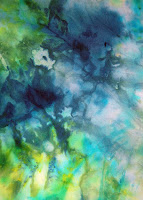I have found dying and printing paper with fresh plant material is so enjoyable and addictive that I always make sure I have some sort of steamer and a supply of paper no matter where I go. So while my husband and I were vacationing in North Georgia last November during the peak of the fall foliage. I couldn't resist playing with all of theses amazing colors. Florida has many equally spectacular shows of natural beauty but our fall is much more subtle, so I go a bit bonkers when I am up North during the fall! I hope you enjoy this little video I created about creating art paper with fall leaves.
Here is a bit more detail about the method I used,to help you make you own prints or just Google "eco printing paper"for more ideas!
25-50 sheets of acid
free water color, card stock or other
art paper
Card board (2 pieces cardboard cut to the size of the paper)
Alum
Water
Plastic dish pan
A pot or roaster
(designated for art use only)
Tongs(designated for
art use only)
Plastic drop clothe
to protect tale work surface
Ruler or other
straight edge
An assortment of
leaves, flowers, tea and colorful herbs.
1. Mix one tablespoon of alum into a cup of
boiling hot water and stir until completely dissolved.
2. Mix the alum solution with 1-2 gallons of warm
water in a tray or dish pan.
3. Add the paper and let it soak. for 15-20
minutes (it is best to add paper to the water one sheet at a time to they don’t
all clump together)
4. Carefully remove paper from water and
spread on your protected work table.
5. Arrange leaves and flower petals on the
paper.
6. Stack up to 25 sheets of paper and sandwich
them between two pieces of card board.
7. Pound the stack to remove any gaps or
bubbles , insuring the plant material is making good contact with the paper.
Bind very tightly with sting.
8. Put the bundles in a pot or roaster on a rack above several inches of water. Steam for 1-2 hours. Or put bundle directly
into the water or a dye bath. Raise the temperature just below a boil. Allow to
simmer for 1 to 2 hours.
9. Use tongs to remove the bundles allow them
to cool bit.
10.
Carefully
unbundle the paper, being careful not to tear the fragile wet paper. Pick off plant material. Separate and spread the papers to dry on a
flat surface. It plant material is stuck, allow the paper to dry some before trying to
remove it. *Tip create ragged or feather edges to give
paper an artistic handmade look: While
the paper is still wet, place a ruler or other straight edge firmly against the
outside edges. Make a crease and tear of the edge with the ruler still in
place.
11.
Once
the paper is dry, dust off any remaining residual plant material























